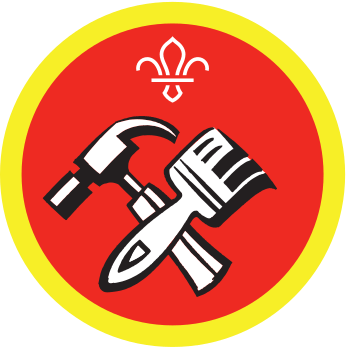
Learn about different types of wood
You’ll need
- Pens or pencils
- A copy of the wood grid for each pair
- A copy of the customer questions
- Wood samples (optional)
Before you begin
- Use the safety checklist to help you plan and risk assess your activity. Additional help to carry out your risk assessment, including examples can be found here. Don’t forget to make sure all young people and adults involved in the activity know how to take part safely.
- Make sure you’ll have enough adult helpers. You may need some parents and carers to help if you’re short on helpers.
Planning this activity
- If possible, gather samples of the five types of wood for everyone to see, touch, and pass around. A DIY shop may be able to give you samples or offcuts for free.
- You may want to label each sample, so it’s obvious which type of wood it is.
Play the game
- Gather everyone together and explain you’re going to learn about different types of wood, then find out which is best for different DIY projects.
- Ask everyone to get into pairs and give each pair a copy of the wood grid, and a pen.
- If you have them, pass around the samples of wood. Everyone should look carefully at the wood, feel its surface, and feel how heavy it is.
- Pretend to be the first customer by reading out the first customer question.
- Each pair should use the information in the grid (and the samples of wood) to help them decide which type of wood the customer needs. They should write the customer’s name on their grid, underneath the right type of wood.
- Continue reading the customer questions, giving the pairs enough time to talk about and write down their answers.
- The game is finished once everyone has matched the customers to the wood they need.
- At the end, check over your answers and see how many each team got. Remember to reward teamwork and communication, as well as correct answers.
Reflection
This activity needed you to problem-solve. How did you narrow down your options to get the right answer? Was it easy? Did it get easier or more difficult as more customers arrived? Could you do it quickly, or was it better to take your time? Could you choose the right wood as soon as you knew what the person was making, or did you need the extra information?
This activity also needed you to communicate well. How important was listening? Did your pair always agree, or did you have to talk about your thoughts? Was it easy to explain your answers to each other? Did the customers give you helpful information about what they needed?
Safety
All activities must be safely managed. You must complete a thorough risk assessment and take appropriate steps to reduce risk. Use the safety checklist to help you plan and risk assess your activity. Always get approval for the activity, and have suitable supervision and an InTouch process.
If you handle wood, make sure it’s sanded, and be careful to avoid splinters.
Invent your own customers, and ask pairs which type of wood is best for other projects.
Samples of wood let people use more of their senses.
All Scout activities should be inclusive and accessible [generic copy]
All Scout activities should be inclusive and accessible.
